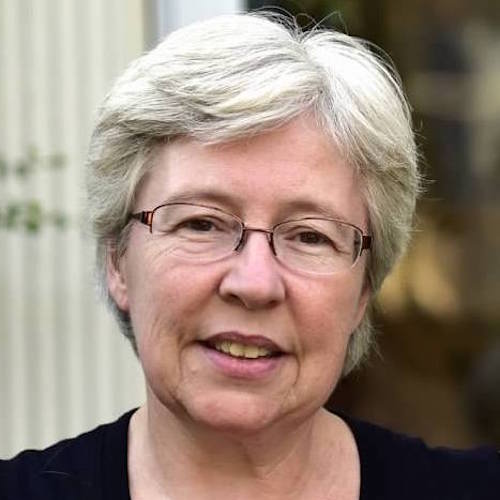First Second ‘Star’ Editor Kiara Valdez Strikes Comics Gold with Webcomics Format
Valdez knew from the start that Harmony Becker’s Himawari House, which earned an SLJ starred review, was something special.

 Since starting at First Second in 2016, editor Kiara Valdez has worked on several graphic novels that garnered starred reviews, including Kat Leyh’s Snapdragon (2020), Ngozi Ukazu’s Check, Please! (2018), and Kevin Panetta’s Bloom (2019).
Since starting at First Second in 2016, editor Kiara Valdez has worked on several graphic novels that garnered starred reviews, including Kat Leyh’s Snapdragon (2020), Ngozi Ukazu’s Check, Please! (2018), and Kevin Panetta’s Bloom (2019).
Valdez knew from the start that Harmony Becker’s Himawari House (2021), which she acquired after seeing the webcomic version, was something special.
“Aside from the gorgeous art, the detail that got me was the masterly way Becker uses language to replicate what it feels like to study and live in another country,” she says of the book, about three foreign exchange students studying in Japan. “For example, most of the time, the Japanese dialogue has English subtitles because the main character understands what is being said around her. But when she’s unsure, there are no subtitles, and readers are also left in the dark.”
 Valdez was right about Himawari House; it received what the editor calls “review bingo”: six starred reviews in book trade magazines, including one from SLJ.
Valdez was right about Himawari House; it received what the editor calls “review bingo”: six starred reviews in book trade magazines, including one from SLJ.
Reading webcomics is part of the job for Valdez, who typically acquires six graphic novels a year and often finds new creators online. “Coming from a generation that grew up with webcomics and the popularizing of [platforms such as] Web-toons and Tapas, I came in with a particular passion for adapting webcomics into books that we could publish,” she says.
Also Read: Nancy Mercado Embraces Collaborative Approach to Editing ‘Star’ Titles
Valdez initially wanted to be a manga editor, but an informational interview with First Second editorial director Calista Brill changed that.
“[She] handed me a copy of Cory Doctorow and Jen Wang’s In Real Life (2014) and broadened my whole trajectory from ‘just manga’ to ‘comics’ in general,” Valdez says. A year later, Valdez began working at First Second as “a spunky and very Dominican editorial assistant,” as she puts it.
“One of the first questions I asked was: ‘Where are the Latinx stories?’ First Second has always cared about publishing books by a diverse group of creators, but there were obvious gaps that we, and the comics industry in general, needed to fill. I’ve put a great deal of energy into acquiring projects by Latinx, Black, and/or queer creators to fill those gaps.”
Once she acquires a project, Valdez sees the editor’s role as providing perspective. “A good editor should have the ability to step into the shoes of a reader and tell the creator what they [as a reader] have trouble with,” she says, “guiding the creator (through questions and suggestions) to a version of the story that better achieves that creator’s intention.”
Valdez is a writer too, which she says has helped her better understand the creators she works with. “I can talk about craft more deeply because I am going through it,” she says. Being an editor also informs her own work. “Because I know ‘how things work,’ I can balance my love of the craft with a healthy dose of strategizing.

Add Comment :-
RELATED
The job outlook in 2030: Librarians will be in demand
The job outlook in 2030: Librarians will be in demand
ALREADY A SUBSCRIBER? LOG IN
We are currently offering this content for free. Sign up now to activate your personal profile, where you can save articles for future viewing





